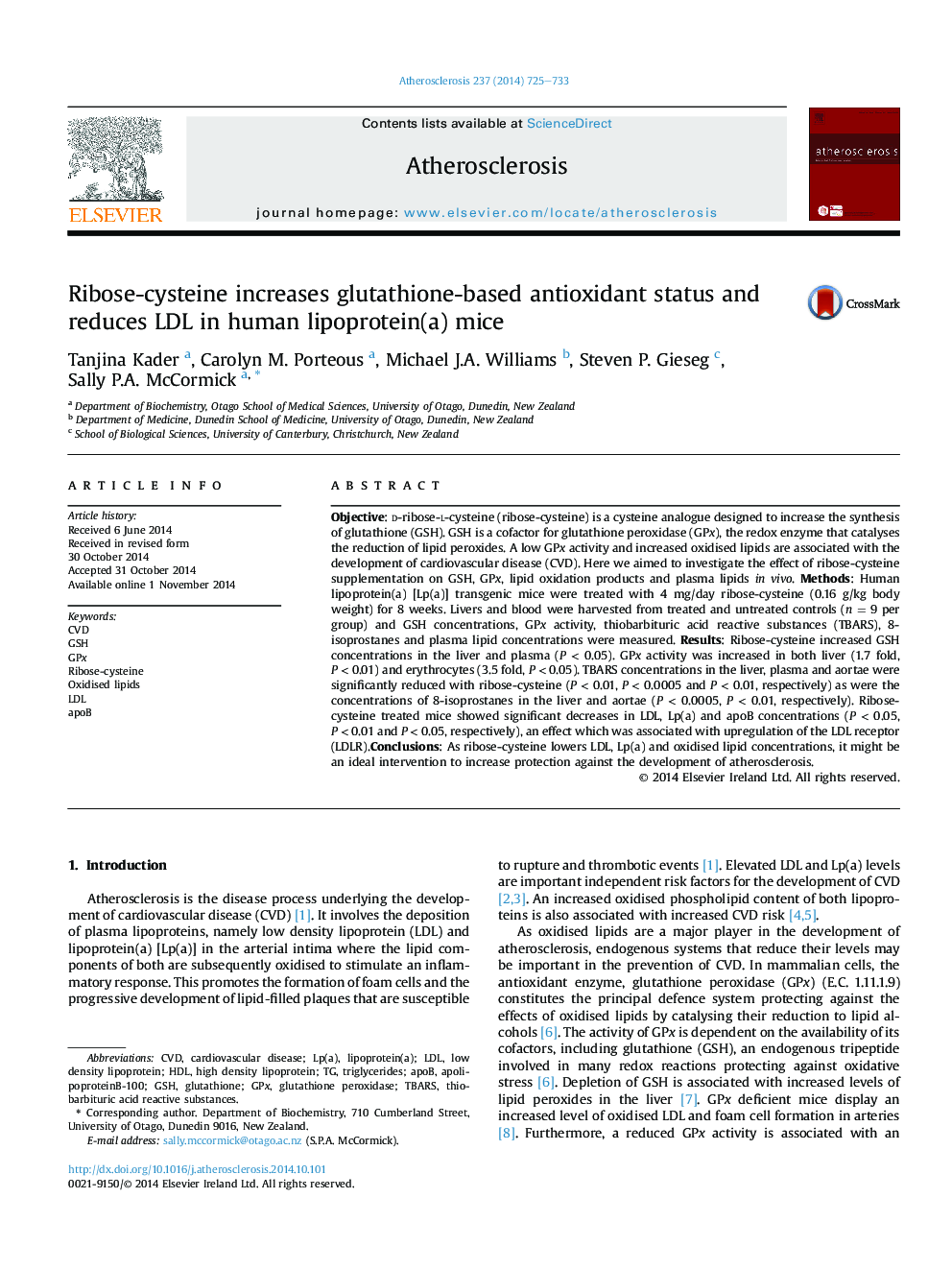| کد مقاله | کد نشریه | سال انتشار | مقاله انگلیسی | نسخه تمام متن |
|---|---|---|---|---|
| 5945302 | 1172350 | 2014 | 9 صفحه PDF | دانلود رایگان |

- We tested the in vivo effect of ribose-cysteine on glutathione and plasma lipids.
- Ribose-cysteine increased GSH and GPx activity and lowered oxidised lipids.
- Ribose-cysteine significantly decreased LDL, apoB and Lp(a) levels.
- Ribose-cysteine might be an ideal intervention to increase protection against CVD.
Objective: d-ribose-l-cysteine (ribose-cysteine) is a cysteine analogue designed to increase the synthesis of glutathione (GSH). GSH is a cofactor for glutathione peroxidase (GPx), the redox enzyme that catalyses the reduction of lipid peroxides. A low GPx activity and increased oxidised lipids are associated with the development of cardiovascular disease (CVD). Here we aimed to investigate the effect of ribose-cysteine supplementation on GSH, GPx, lipid oxidation products and plasma lipids in vivo. Methods: Human lipoprotein(a) [Lp(a)] transgenic mice were treated with 4 mg/day ribose-cysteine (0.16 g/kg body weight) for 8 weeks. Livers and blood were harvested from treated and untreated controls (n = 9 per group) and GSH concentrations, GPx activity, thiobarbituric acid reactive substances (TBARS), 8-isoprostanes and plasma lipid concentrations were measured. Results: Ribose-cysteine increased GSH concentrations in the liver and plasma (P < 0.05). GPx activity was increased in both liver (1.7 fold, P < 0.01) and erythrocytes (3.5 fold, P < 0.05). TBARS concentrations in the liver, plasma and aortae were significantly reduced with ribose-cysteine (P < 0.01, P < 0.0005 and P < 0.01, respectively) as were the concentrations of 8-isoprostanes in the liver and aortae (P < 0.0005, P < 0.01, respectively). Ribose-cysteine treated mice showed significant decreases in LDL, Lp(a) and apoB concentrations (P < 0.05, P < 0.01 and P < 0.05, respectively), an effect which was associated with upregulation of the LDL receptor (LDLR).Conclusions: As ribose-cysteine lowers LDL, Lp(a) and oxidised lipid concentrations, it might be an ideal intervention to increase protection against the development of atherosclerosis.
Journal: Atherosclerosis - Volume 237, Issue 2, December 2014, Pages 725-733